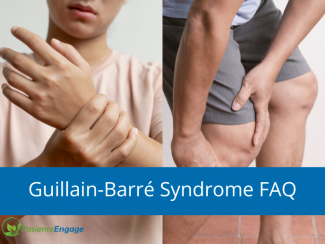
Says Cindy Payne, who fought against the nerve-damaging autoimmune condition with yoga.
I took my first yoga lesson in 1997 more out of curiosity than anything else, since yoga was not yet popular in Singapore. In 2001, I began to study Iyengar Yoga more seriously. When I first started taking lessons, I was primarily focused on the physical part of the practice – seeking to counter all the running I had been doing for 25 years, plus juggling owning a boutique marketing-communications agency, dragon boating several times a week, and managing a long-distance marriage where I travelled between Belgium and Singapore once a month. Yoga helped me improve my stamina, flexibility and balance, as well as concentration – which calmed my body, mind and emotions.
Over the years, I gradually increased my commitment to Iyengar Yoga to twice-weekly classes and then multiple times a week.
A diagnosis of GBS and on pain medication
In August 2013, I was diagnosed with Guillain-Barré Syndrome (GBS), a rare disorder in which my immune system attacked and damaged my nerve cells, causing extensive muscle weakness and numbness in my hands and feet. I was fortunate that I did not have a serious case, resulting in paralysis and intubation; however, it was very scary because it developed quite suddenly and I immediately had trouble walking and holding things.
Each case is unique, so it was unpredictable how long it would last. In addition, treatments to speed recovery and reduce the severity of the illness are reasonably invasive, especially because I was not hospitalised. Ultimately, I relied on Neurontin, a common nerve pain reliever to ease the discomfort, and I worked on improving my agility and steadiness with a lot of yoga.
Early days – doing asanas while lying down
It is vital in yoga to always let your teacher know of any injuries or medical conditions, so that he/she can provide advice with alternative ways to get into various asanas (postures/poses). The idea behind modifying asanas is that you will be able to complete the asana with the correct effort, and not hurt yourself through over exertion. Though none of my yoga teachers had any first-hand experience with GBS, they researched the illness and helped me use props to compensate for the lack of sensation in my hands and feet, stabilise my balance, and slowly regain my energy.
For the first few weeks, I only did asanas lying on the floor, since I was so wobbly standing. By lying on my back, I could stretch my legs and flex my ankles, using a belt to pull my legs up and closer to my torso or out to my sides (Supta Padangusthasana). This enabled me to overcome the stiffness in my hamstrings, calves and ankles. Just holding the belt with my hands as I pulled on my extended legs also helped me to improve grasping things and exercise my numb fingers. I, then, used sandbags – weighing between four to five kilos each – to increase a little extra weight to my groin to encourage a more intense opening in my reclining asanas, including Supta Baddha Konasana. Additionally, I placed a bolster, a firm rectangular body pillow, under my back to facilitate the opening of my chest so I could breathe deeper and relax more in Supta Virasana and Viparita Karani.
Getting stronger – sitting and standing asanas
Gradually, I re-introduced sitting and standing asanas. With the aid of bricks/blocks, which provide a stable yet adjustable surface, I could maintain the correct alignment of Uttanasana, Utthita Trikonasana, and Utthita Parsvakonasana by opening my hips and chest and elongating my trunk and spine, without having to bend all the way down and touch the floor. Furthermore, I sat on blankets to add height to my tight hips in Virasana, Upavistha Konasana, and Svastikasana.
As I slowly regained some strength, I included chairs for improved support in both seated and standing asanas, including Adho Mukha Svanasana, Utthita Trikonasana and Paschimottanasana. The chairs increased my flexibility and built more body awareness to my atrophied muscles. Finally, rope walls, simple ropes mounted to the studio wall, allowed me to go deeper in various inverted asanas. Since I was suspended by the ropes, which took the weight off my hands and arms, I could experience Ahdo Mukha Svanasana and Salamba Sirsasana in a safer way.
Off painkillers and some additional benefits of yoga
After 18 months, I was well enough to stop the Neurontin, though I still have some lingering light numbness in two fingers and the balls of my feet. Although I am mostly recovered, my balance is still not optimal and one-legged standing poses are challenging. Today, I am more dedicated to my yoga practice than ever before, practising almost every day. Not only have I experienced the physical healing benefits of yoga with increased strength, litheness, steadiness, coordination and alignment, but I also have more toned muscles, greater stamina and better posture. Moreover, I enjoy a calmer mind and balanced emotions, which have enabled me to be generally more focused in all activities in my daily life. I am now learning relaxation techniques and starting to meditate.






